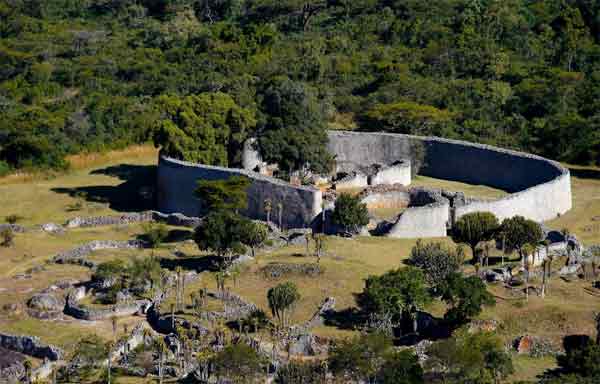The medieval city found in Africa had an amazing pipe system

The first major city to form in southern Africa was Great Zimbabwe and was home to an estimated 18,000 people during medieval times. At its peak, between the 11th and 15th centuries, it was home to elites, religious leaders, craftsmen and merchants. It is currently in ruins, but the reason is still a mystery.
Archaeologists have often linked the drought and arid climate to the abandonment of the city. However, a recent survey found that the people who lived there had an effective water storage and conservation system.
The study was conducted by researchers from Denmark, South Africa, England and Zimbabwe and was published in the journal Anthropocene. A series of wells have been discovered around the city, known as dhakas, which may hold the key to understanding the city’s water supply.
city water network
The circular depressions on the outskirts of the city were previously thought to be the result of excavation of clay, used in the construction of houses and buildings. However, a series of dhakas have been found on the slopes, strategic places for the collection of rainwater and groundwater. Other shafts extending into streams were also found.
These wells were used to collect rainwater and to dam some stretches of rivers, they probably supplied the city with water for consumption and agriculture during most of the year and also in times of drought.

Another indication that dhakas were indeed dug to serve this function are the plants found around them. They are characteristic of places with moist soil, such as rivers or groundwater sources.
The research was conducted through the analysis of the wells with aerial sweeping, which made it possible to see the main characteristics of the place, even where the vegetation was thicker. In addition, field research and conversations with communities living near the ancient city were also conducted.
Researchers estimate that dhakas can store up to 18 million liters of water. However, calculating this capacity precisely is difficult because this is the first well surveyed.
According to the researchers, some areas of the city become wet and swampy during the rainy season. These conditions may have been ideal for taking the clay for the construction of the houses and therefore the holes were used as a reservoir for the underground water coming from the nearby hills.
Collapse of Greater Zimbabwe
Little is currently known about the city of Great Zimbabwe and what caused it to collapse. During its heyday, the world experienced the Medieval Climate Anomaly, in which the world experienced high temperatures and a Little Ice Age.
Therefore, the possibility of the city falling into disrepair due to climate change cannot be ruled out, even with an effective water system. But economic and political crises may also have brought about the demise of Great Zimbabwe.
The post-medieval city found in Africa had an amazing pipe system that first appeared in Olhar Digital.
Source: Olhar Digital
Leave a Reply